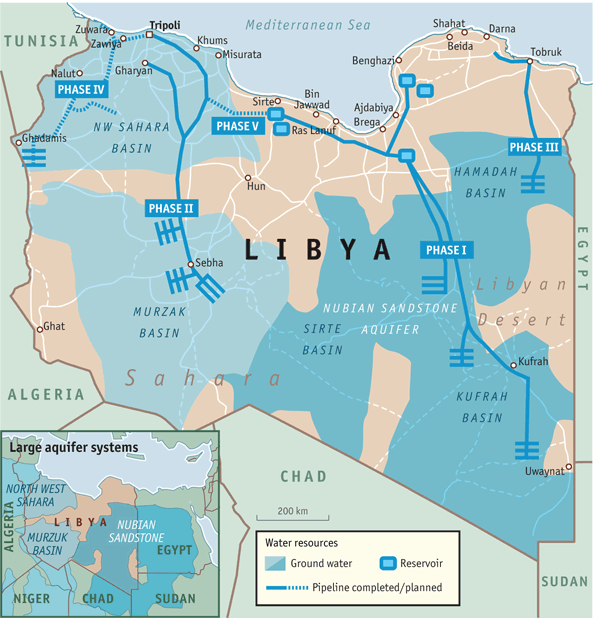It’s the world’s largest irrigation project. Qaddafi calls it the “Eighth Wonder of the World.” The Economist explains:
Much of Libya’s water supply used to come from expensive desalination plants on the coast, which left little water to irrigate land—vital in this largely desert country. Moreover the coastal aquifer historically used in Tripoli was becoming contaminated and its salinity was increasing. So in 1983 a massive engineering project, known as the Great Man-Made River Project, was created to supply water from desert aquifers to the coastal region for the majority of the Libya’s 6.3m people and to expand agriculture through irrigation.
The project currently extracts 2.5 million cubic meters of water per day (expected to reach 6.5 million per day) from 1,100 wells and through 4,000 kilometers of pipelines. The CS Monitor has more details:
The Libyan government heavily subsidizes the water for farmers who pay about $0.62 for one cubic meter; slightly less than half the price citizens pay to drink it.
The government claims the reserves will last 4,625 years, but independent estimates suggest the reality is more like 60 to 100 years.
The water is drawn from an aquifer system shared with Egypt, Chad, and Sudan. Such transboundary aquifers are a classic case of the tragedy of the commons. As The Economist suggested last fall, an emerging trend in multi-state agreements over shared aquifers offers hope that the tragedy can be avoided.
Given the recent developments in Libya, the project’s future is in question. Pro-Qaddafi forces have reportedly destroyed pipelines carrying water to regions under opposition control. Here are more details on the project and here are Terry Anderson and Pamela Snyder on groundwater rights and markets.




